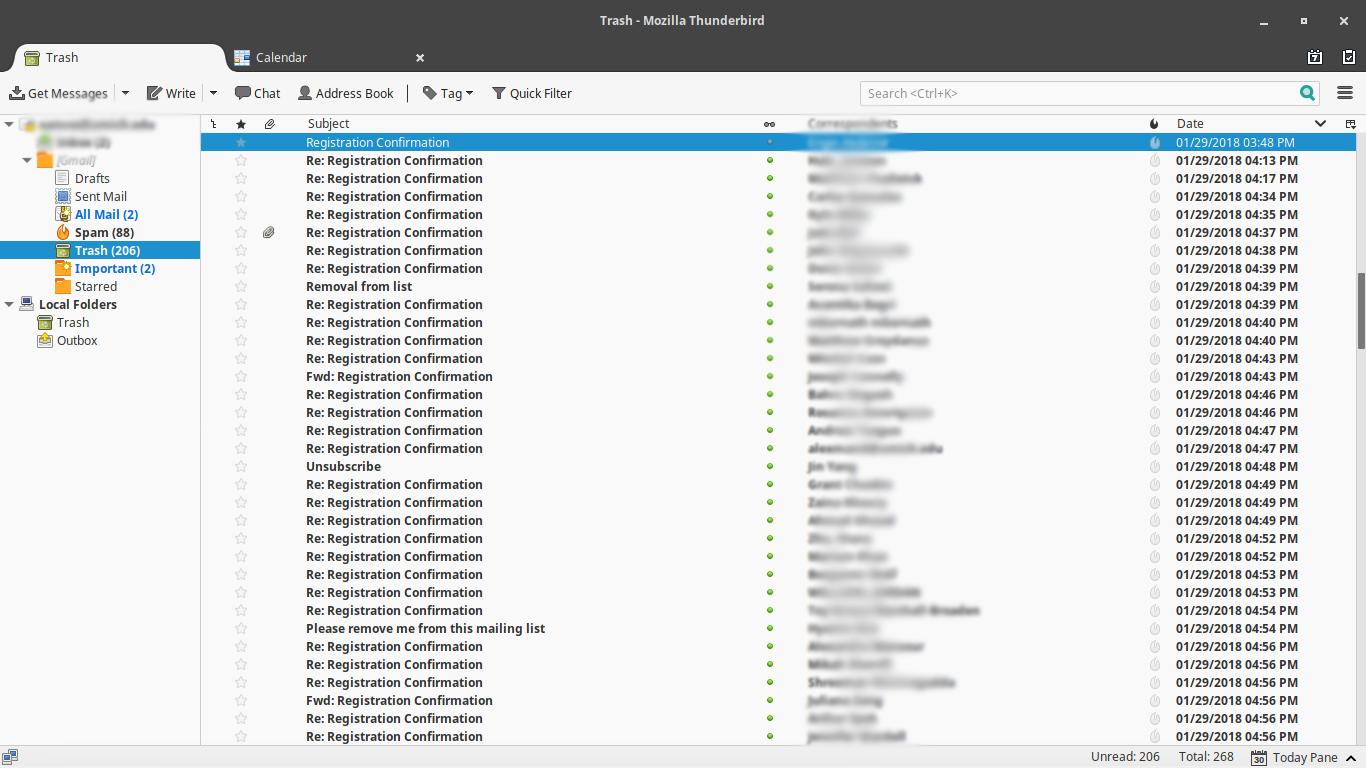At 3:38, January 29th, Anno Domini two thousand and eighteen, Engin, a senior in computer science, wrote an email to the Michigan Makethon listserv. He expressed concern regarding the status of his registration, which had not been confirmed. Unfortunately, the listserv had been poorly set up. Rather than simply messaging those responsible for registration at Makethon, the listserv instead sent his inquiry to nearly 15,000 students.
Small slip-ups like this are hardly notable; had the 15,000 individuals emailed been properly trained in netiquette, there would be only a single grunt muttered throughout campus.. After all, its recipients were ostensibly all tech-aware college students. Surely this would all blow over.
It would not turn out that way. Immediately, Engin started receiving confused emails from several recipients, informing him that they had no insight into the status of his registration. Fortunately, all of these individuals were conscientious enough to simply reply to him. By hitting only “reply”, they refrained from sending messages to the entire listserv. After some research revealed the number of his recipients, Engin naively hoped that they would ignore this obvious mistake, and not turn to panic.
His hopes were shattered when, at 4:13 PM, 25 minutes after the original email was sent, the nuclear option was employed — the one click fix, the big “RA”. One of the recipients used “reply all” to express his dissatisfaction with receiving this email. Soon, others replied in a similar manner. In the proceeding 1 hour and 45 minutes, over 200 emails expressed their lament over the situation, demanding a redress of grievances. Every single one of them did so by pressing “reply all” to the original message, a reply to the message, or to any number of separate messages sent to the poorly configured listserv. Curiously, one email sent to the group mentioned an “email test”, which might explain the source of the bug.
Some sent messages to the listserv asking people to not hit “reply all”. They were unaware that they were fighting fire with kerosene; the more messages that poured in, the greater the panic. It was a digital stampede, the (non-tragic) Italian Hall Disaster of email misuse.
Some sent messages to the listserv asking people to not hit “reply all”. They were unaware that they were fighting fire with kerosene; the more messages that poured in, the greater the panic. It was a digital stampede, the (non-tragic) Italian Hall Disaster of email misuse.
Every single minute between 4:46 and 5:23 PM, without exception, at least one message was sent to all 15,000 recipients. At 5:58 PM, the emails abruptly stopped, likely due to the listserv being corrected. While this must have come as a relief for those who did not know how to apply filters, it unfortunately ended the experiment right before prime time. Although less than 2% of those emailed hit “reply all”, one must account for the fact that the email list included many students who had graduated (some of which replied nonetheless), and others who had simply not checked their email in that relatively short span of time.
This petty incident raises many profound questions. Are we “tech-savvy millennials” really as technologically competent as we’re made out to be? Or does all of this digital mush we consume give us less understanding of technology than it does of taking indecent pictures or writing asinine broadcasts? Can we really claim to be “better with computers” than our abacus wielding grandparents? Have we humans evolved to embrace more advanced technology, or has technology evolved to embrace a more infantile humanity?
None of these questions can really be answered by this, but we can still gain from these ancient mantras: don’t use “reply all” and learn how to make email filters.
